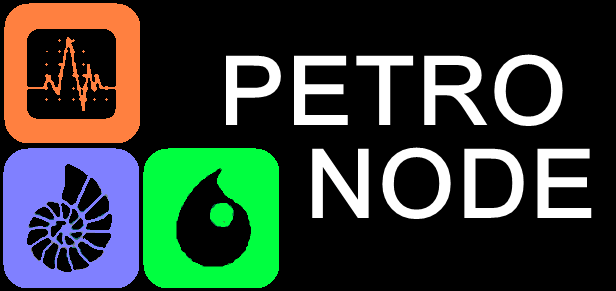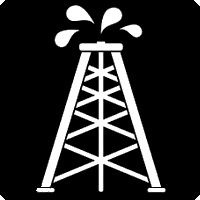

What is PETRONODE?
Some thoughts about specialized software
If you are reading this, you probably fed up with the commercial formation evaluation software. A software vendor, usually a large service company, would advertise a software product, which apparently can do everything for you, besides, perhaps, making your Cappuccino. Then, they charge an arm and a leg for it. Then, you suddenly discover three sad facts.
One: the software does not do everything. No software ever does, and nothing in this world is perfect. If you need something, which is not available out-of-the-box, you got to beg for it. Call a technical support dude (which place is he or she located on Earth – and what is the time zone?). Submit a software modification request. Explain the programmers what to do. Explain again. Wait... Perhaps, to the next release. Perhaps, forever. Finally, the desired modification is implemented. Will it work for you? The answer is, well: maybe! Have the programmer got what you need? Has he written it correctly? Has it been tested? By whom and how? Most importantly: while the modification was on-going, your business requirements have changed. Do you need this modification anymore?
The second, and perhaps even sadder fact, is that the proprietary software often does things that you do not want or don't understand fully. If you keep asking yourself: 'how the hell this was computed?' you are probably on the right track. An artist does not need to understand how the particular edge-enhancing filter works. It produces desired, aesthetically pleasing results, and it is all what is needed. In the engineering, we can't afford the luxury of such black boxes. That oil reserves computation can be aesthetically pleasing (more often nowadays, it is not!) But, it does not matter. It must be scientifically correct and explainable. In the engineering, if you can't provide the exact method, the answer does not exist. “I click this button after that one, and this number popped up in here. Must be right.” Right?
And the final, and the sadder fact yet, is that you, as a user, have been reduced to a mere data technician. A computer operator. A button-clicker. If you need, let say, 1222 clicks to process one well, two wells will take exactly 2444 clicks. And twenty wells? 24440 clicks, give or take a little. Out of these twenty-four thousand clicks, only about two hundred require your education and experience in Geoscience. The rest is... secretarial duties. Import. Export. Print. Screenshot. More screenshots! More screenshots!!! And another print.
Is there a way out of this black-box loop? Absolutely. As the matter of fact, many commercial formation evaluation products offer some sort of programming language within: from the 'classic' FORTRAN-IV to Python. In Schlumberger Techlog, for example, every single thing used to be done with Python. Well, before the version 2013 came out, in which the well headers can't be accessed from Python any more! One problem in the commercial software, the scripting modules are often bolted on the side, as an afterthought. They get an obscure documentation, if any. And often, they require a separate license. People pay money for it, why not charge them? As the result, your manager may be reluctant to purchase it, huh!
“Ah, it is all about Python scripting?” the kind reader exclaims at this point. “I don't like this scripting thingy! I'd rather do it all manually. All by clicking! The graphical user interface is designed for that, right?” Well, back to you twenty-four thousand useless clicks, man. Your boss is waiting. Chop-chop!
Or, perhaps, the reader is the boss? That poor guy (or gal), who is screaming 'Chop-chop!' all the time. Of course, you need your data. Fast, reliable. And, if an error happens (they do happen, errare humanum est!), or your boss requires a new estimate, you would like to re-do everything, even faster. Believe it or not, you do not need more personnel. Throwing a monkey after monkey behind those type-writers does not necessarily expedite the Shakespeare plays' writing (although the probability experts may think the opposite). The scriptable Geoscience software it exactly what you need. It works night shifts, and never complains. Or asks for an overtime pay.
And for those who passed to this point and decided to find out how the formation evaluation work can be both scientific and enjoyable at the same time, read on.
We will build a set of well-crafted software libraries that understand the common oilfield formats: LAS, LIS, DLIS, SEG-Y. These libraries will be wrapped in concise and manageable standalone utilities that are both interactive and scriptable (could be called from Python, for example). No back-boxes here, everything will be provided with the full code under the Open Source distribution model. With that, anybody can create a custom automated formation evaluation workflow, suitable for particular needs. And do two hundred clicks instead of many thousands. And save your eyes, your fingers, and your brain for something better. Like, for example: the real Geoscience.
31-Oct-2019
New species in Codelets Zoo!
09-Oct-2019
Updated the SlideComposer on-line help.
02-Oct-2019
PETRONODE website undergoes a major facelift, using Python and Flask.
26-Sep-2019
Completed chapters 17 - 20 of Limits to Limits.
16-Dec-2018
Added chapters 13 - 16 of Limits to Limits.
24-Jan-2018
Updated Course Synopses.
31-Dec-2017
Added chapters 11 and 12 of Limits to Limits.
23-Oct-2017
Published first 10 chapters of Limits to Limits.
